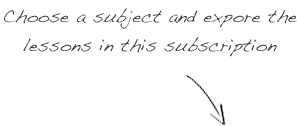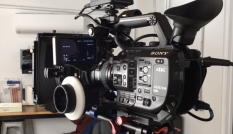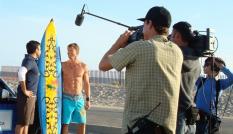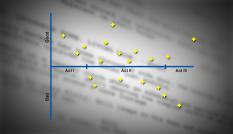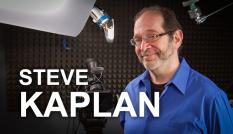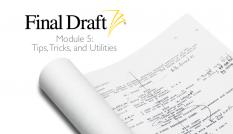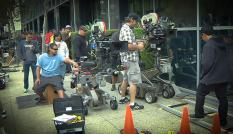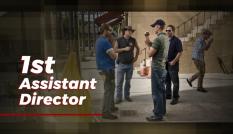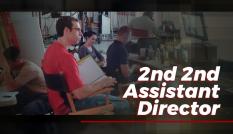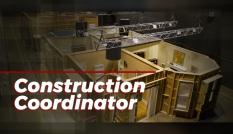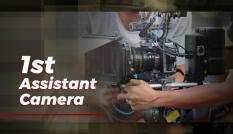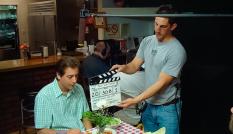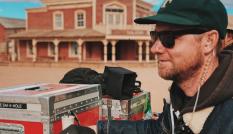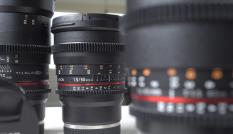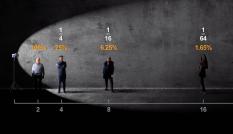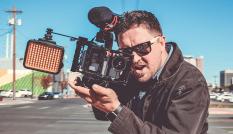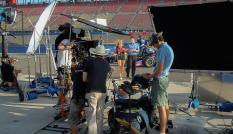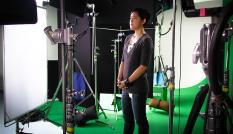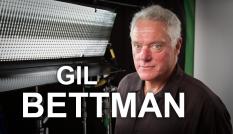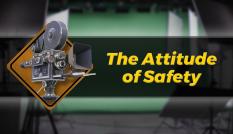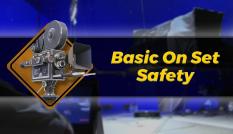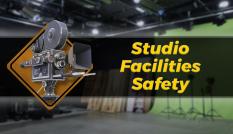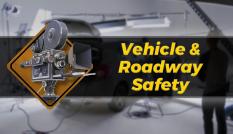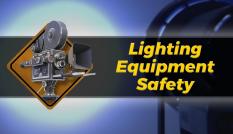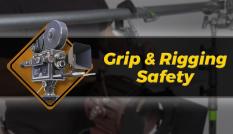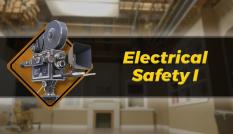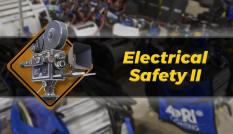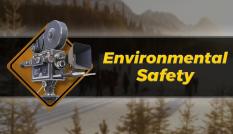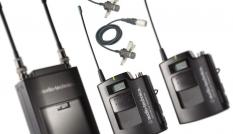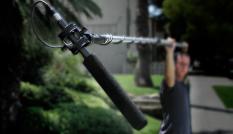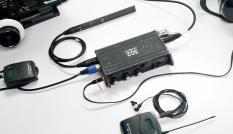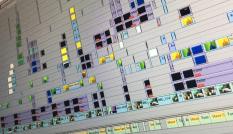
Basic Shooting Techniques
Once your camera has been set-up, you're now ready to shoot on set. This lesson guides you through the camera settings you'll use to get each shot.

Basic Audio Techniques
This quick-start guide will help you configure your camera to record high-quality audio on set.

Realities of the Industry
The entertainment industry does a great job of creating an illusion of how it operates, but how does it really work? Learn from top Hollywood filmmakers what really goes on behind the scenes, and how that impacts your career.
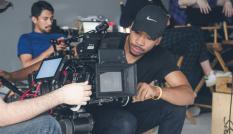
Careers in Filmmaking
Learn what opportunities exist for a career in the film industry, how to choose the right one, and the best way to prepare for a long, successful career.
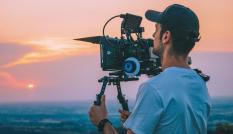
Working Freelance
Learn the realities of working in a freelance-based industry, and how to survive.

Making Money as a Filmmaker
Learn how to make a living in film production, manage your money, and prepare for the ups and downs of the freelance world.

The Art of Networking
Like they say, it's all who you know... and they're right. In this module, learn the art of networking, meeting people, and navigating the trecherous waters of Hollywood.

Moving to Los Angeles
Thinking about moving to LA? Learn how to best prepare and hit the ground running in the second largest city in the United States.

How to Survive in Hollywood
Emmy-winning Executive Producer Steve Skrovan shares tips and tricks to surviving and keeping your career alive in Hollywood
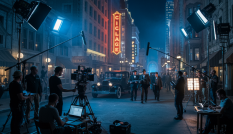
Making a Studio Movie
Learn how to get your project through the studio approval system, what studio executives are looking for, and how studios work with directors and producers.

Making a Business Plan
Learn, step-by-step, how to build a business plan that will appease even the savviest investors. Hollywood producers take you through the process so you can go into the fundraising process confident in the movie you’re selling.

Agents and Managers
Learn the different between an agent and a manager, the roles each fulfill, how to get one, the costs involved, and how to use their services to promote your career.

How to Sell a Reality TV Show
Producer Troy DeVolld (Dancing with the Stars, The Bachelor, and Hollywood Game Night) teaches you how to sell a reality TV showin Hollywood.

Lesson 3 - Finding Story Ideas & Inspiration
Choosing the right idea for you script is a challenge– not only determining which ideas will draw an audience, but finding one you're willing to stick with through month, even years, of writing.

Lesson 4 - Developing a Marketable Idea
When you're thinking of an idea for your screenplay, always start backwards and define the audience and what you want the movie to accomplish. In this lesson, we'll show you factors to consider when developing an idea.
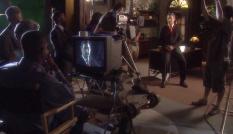
Lesson 5 - Story Formats
Learn how stories are formatted across feature and short films, animation, commercials, documentaries, music videos, and corporate videos.

Lesson 6 - The Seven Plot Types
Discover the foundation for every story every told, and how you can use one of these plot types as the foundation for your story.

Lesson 19 - Title, Theme, and Log Lines
The heart of every story is the theme, but the log line is how you pitch it and the title is how people remember it. Learn how to develop an effective title, theme, and log line for your story.

Lesson 22 - How to Write the First Draft
Now that your story has been outlined, you can move onto the first draft. In this lesson, you'll learn techniques for expanding your story into an engaging screenplay.

Lesson 25 - Your Screenplay and the Real World
With your screenplay completed, you have to interact with producers, agents, and amanagers. In this lesson, you'll learn how to manage feedback, protext yoru screenplay, and improve your craft.

The Changing Landscape of Television
Emmy-nominated Pamela Douglas sheds light on the ever-changing art of writing for the small screen - from story structure to career opportunities.

Working in a Television Writers' Room
Emmy-winning Writer, Steve Skrovan takes you inside the writer's room to learn the politics, challenges, and techniques of the collaborative writing process.
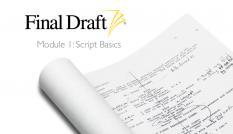
Final Draft - Script Basics
In this first of 6 training modules, learn the basics of script formatting and how you can use Final Draft software to begin formatting your screenplay, including scene headers, action lines, dialogue, parentheticals, dual dialogue, and transitions.
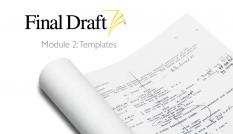
Final Draft - Using Templates
In this second of 6 training modules, learn how to use existing templates to format your Final Draft script into hundreds of popular formats including sitcoms, hour-long dramas, SNL skits, multi-camera shows, Broadway musicals, and novels.
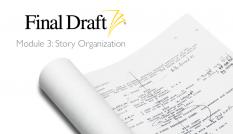
Final Draft - Story Organizing
In this third of 6 training modules, learn how to throw away the old note card and use Final Draft's story organizing capabilities to organize your scenes, characters, and dialogue in an efficient way.
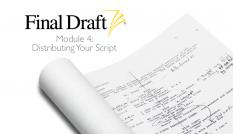
Final Draft - Distributing Your Script
In this fourth of 6 training modules, learn how to export and distribute your script through Final Draft for both physical and electronic delivery, prepare your script for table reads, water mark, and learn about Final Draft on mobile devices.
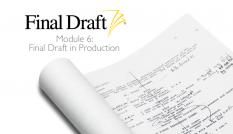
Final Draft - Production
In this last of 6 training modules, learn how to use Final Draft to manage script changes and revisions, how to lock pages, manage scene numbers, scene omissions and additions, and export reports that quickly analyze your script for production.

Raising Money
Learn how money is raised for motion pictures, from equity and debt financing to tax incentives

How to Form a Company
In this lesson, learn the types of corporate structures, how single purpose vehicles protect the parent company, how to protect your assets, and create an LLC.
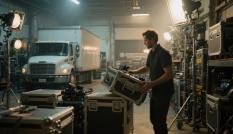
Working with Vendors
Learn to find qualified vendors in your shooting area, manage relationships with vendors, the financial workflow from purchase orders to invoices, and tips to making sure you get the resources you need on set.

Unions and Guilds
Learn how the unions function, the benefits for members, the key unions: IATSE, DGA, SAG, and WGA, the differences in hiring union and non-union crew, how productions flip, and how to shoot in a “Right-to-Work” state.

Working with SAG/AFTRA
Learn how SAG functions, the ramifications of the SAG-AFTRA merger, how signatories work, how the Taft-Hartley act admits new members into SAG-AFTRA, and the benefits and drawbacks of Financial Core. Be prepared when working with SAG-AFTRA actors on your production.
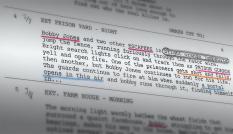
Breaking Down the Script
Learn to properly break down the script, line the script, techniques for breaking down each scene, how to use scene breakdown forms, and how assistant directors and line producers should manage the breakdowns from other departments on the project.
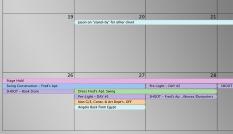
Scheduling the Production
Learn to determine the number of shooting days needed to shoot your film, how to determine the shooting order, manage day and night shoots, account for turnaround time, and the benefits of shooting consecutive shooting days.
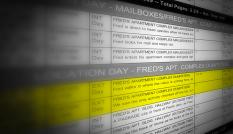
Scheduling the Day
Learn how to schedule company moves, meal breaks, learn the productivity arc of a shooting crew, how to work with the director’ shot list, skills for managing a shoot running over schedule, how to generate a one-line schedule, and how to create call sheets.

Budgeting
Learn to create an accurate budget, tricks to reducing the budget if you’re running over, how to plan for contingencies, how to manage crew expectations, and how to go into production knowing you’ll have the money to finish.
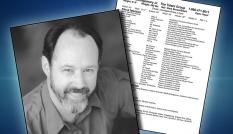
Finding Actors
Learn how to work with casting directors to approach recognizable actors, how to develop a script that appeals to certain talent, the art of packaging, casting actors on your own, and the pros and cons of working with unknowns.
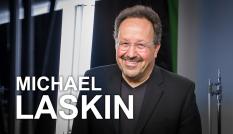
The Art of Auditioning
Renowned actor, instructor, and author, Michael Laskin reveals the challenges facing both actors and directors in the audition process and how to overcome them.

Callbacks
Learn how to conduct the second and third auditions, what to do after the auditions, recognize danger signs in actors, and how to prepare the actors for the next step: the rehearsals.
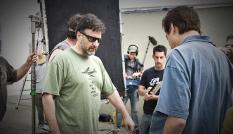
Rehearsing Actors
Learn how to structure rehearsals, how to conduct a table read, and what the responsibilities are of the director and actors during the rehearsal process.

Rehearsal Exercises
Learn valuable techniques from working Hollywood directors to get to the heart of the actors’ performance, learn rehearsal techniques from developing the character to overcoming mental blocks on the set.

The Language of Directing Actors
Learn from Hollywood actors and directors on how to approach and work effectively with actors on set, how to deal with problematic actors, and how to communicate in the actor’s language.
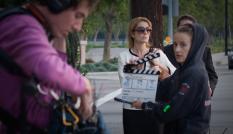
Directing Actors on Set
Learn what to say to an actor at the beginning of every scene – 30 seconds before you call action and 30 seconds after you call cut, learn how to rehearse on set, establish strong blocking, and how to help actors balance their performance with the technicalities of film production.
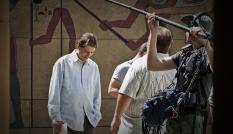
Directing Mistakes
Learn to identify common directing problems and how to fix them to ensure you get the best performance on set possible.

Directing Extras
Learn how to find extras, the right way to direct them, how to cheat them on set, liability concerns and how to avoid them, logistics on the shooting day, and the most common problems filmmakers encounter when working with extras
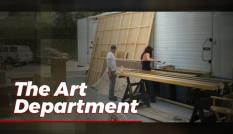
The Art Department
Learn the structure and hierarchy of the Art Department, the duties and responsibilities and how this department can be scaled up based on the size of the production.

Set Design
Learn how to design sets on both large and small budget productions.

Set Construction
Learn how movie sets are constructed to create both a convincing environment and a workable production setting.

Set Dressing
Learn how to dress both practical locations and constructed movie sets to create a realistic environment for the characters.

Props
Learn how props are created, gathered, and organized for a movie.

Film Commissions
Learn how to use the services of a film commission to secure locations for your movie

Film Permits
Learn when you need a filming permit and how to obtain one

Location Tech Scouting
Learn how to properly scout a location, what to look for and how to prep it for your shoot.
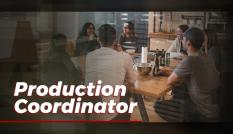
Production Coordinator
Learn the duties and responsibilities of the Production Coordinator both on and off the set.
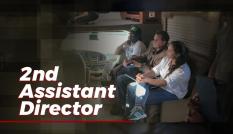
2nd Assistant Director
Learn about the responsibilites of the 2nd Assistant Director in pre-production and on set.
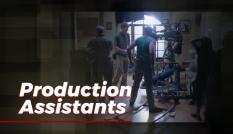
Production Assistants
Learn the duties, responsibilities, and expectations of production assistants on set.
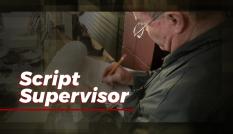
Script Supervisor
Learn the duties and responsibilities of the script supervisor, from maintaining continuity to preparing the script notes.

The Production Designer
Learn about the Production Designer, his responsibility to the look of the film and her relationship with the director and cinematographer.
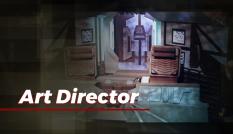
The Art Director
Learn the function, duties and responsibilities of the Art Director.
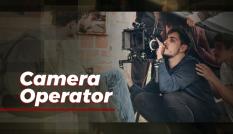
Camera Operator
Learn the duties and responsibilities of the camera operator both on and off the set.

Key Grip
Learn the duties and responsibilities of the Key Grip

Best Boy
Learn the duties and responsibilities of the Best Boy
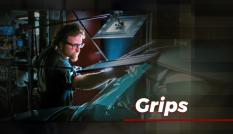
Grips
Learn the duties and responsibilities of the Grips
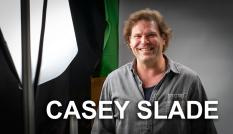
Working as a Grip
Hollywood veteran Casey Slade never ceases to entertain as he takes us inside the world of the grip department.
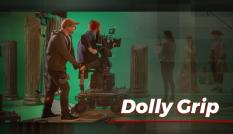
Dolly Grip
Learn the duties and responsibilities of the Dolly Grip

Gaffer
Learn about the duties and responsibilities of the gaffer.

Electricians
Learn the duties and responsibilities of the Electricians.
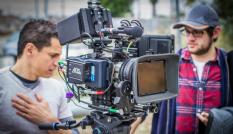
What to Bring to Set
As you prepare for your first day on set, this lesson walks you through what to wear and the tools to bring.
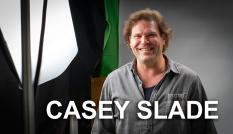
Working with Difficult Personalities
Hollywood verteran Casey Slade has worked with everyone from A-list celebrities to new filmmakers, and shares some keen insight on how to deal with egos in the film industry.
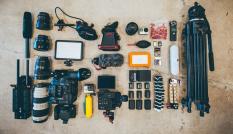
How to Prep a Camera
Drew Lauer, from Hollywood Special Ops, takes us through the process of prepping a camera package for a shoot.
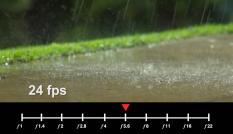
Frame Rates
Learn about frame rates, how to choose the correct one, and the impact frame rates can have on your image.

Tripods and Sliders
Learn the types of camera support equipment - from tripods to jibs - and how to properly use them.
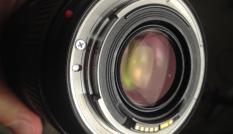
Introduction to Lenses
Learn about the attributes of the camera lens and how to choose the best lens for your production
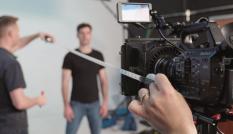
Focusing Techniques
Learn how to use focus tools - including the measuring technique, peaking, and 1:1 zoom to keep your shot in sharp focus

How to Expose a Shot
From zebra strips and light meters to false color and waveform monitors, learn how to use these tools to get the perfect exposure.
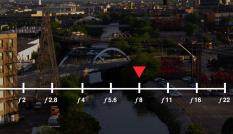
F-stops and T-Stops
Learn how f-stops and t-stops work, and how to use them as a measure of exposure.

The Camera Shutter
Learn how the camera shutter works, its limitations, and how you can use use it to change the look of your footage.

Attributes of Light
Learn the basic attributes of light and how to craft it to achieve the ideal cinematic look.

Tungsten Lighting
Learn how to work with, operate and trouble shoot tungsten lighting fixtures.
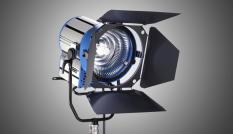
HMI Lighting
Learn about HMI light fixtures, how to operate, maintain and troubleshoot them.
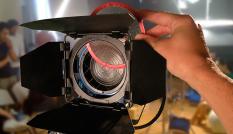
Reducing Light
Learn the tools and techniques for reducing the brightness of light from a light source.
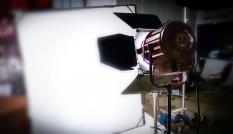
Softening Light
Learn tools and techniques for softening or diffusing light.

Shaping Light
Setting up a light is easy, but crafting it is an art. Learn the tools and techniques for shaping light to achieve the desired look.

Color Temperatures
Learn about the colors of different light sources, how they affect the format on which you're shooting, and how to properly compensate.
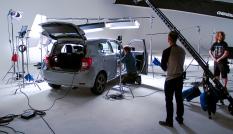
Lighting a Scene
Learn how to assess an existing location, scene blocking and existing lighting to deterine the best way to light a set.

Lighting People
Learn how to use the three-point lighting system to properly light people.

Lighting Demo - Bathroom - Daytime
In this lighting demo, Emmy-winning cinematographer Jason Tomaric reveals his approach to lighting and shooting a scene in a small bathroom.

Lighting Demo - Bedroom - Daytime
In this lighting demo, Emmy-winning cinematographer Jason Tomaric reveals his approach to lighting and shooting a scene in a bedroom during daytime.

A Director's Prep - Beginning the Project
Learn how to begin the directing process, read the script for the first time, best prepare long before you even set foot on set, and how to breakdown the script for character and story.
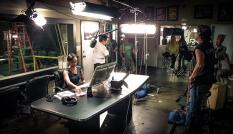
How to Shoot a Scene
Learn the process of how to shoot a scene: blocking, light, rehearse, tweak, and shoot.
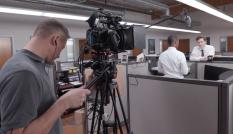
How to Direct a Scene
Learn how to direct a scene from blocking the actors to choosing the camera angles.
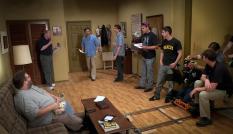
Blocking Actors
Learn how to block the actors, what story cues to look for, how to drive the blocking emotionally, and how to work with the actors to get the best physical performance possible.
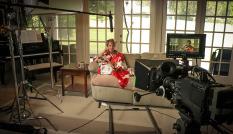
Basic Coverage
Learn the basic template for shooting the action in a scene - the master, coverage, inserts and cat-in-the-window shots, learn how to vary shot size to increase coverage, break the standard, plan for the edit, and ensure you get the coverage you need.
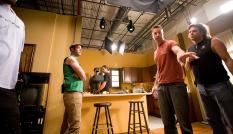
Advanced Coverage
Learn how to craft a oner, create a psychological impact for each shot, create compelling establishing shots, manipulate the pacing and rhythm of a scene, determine the opening visual, and enhance transitions from one scene to the next.
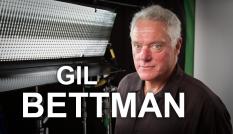
Directing a Chase Scene
Television director Gil Bettman shows you how to direct a dynamic, exciting chase scene on a low budget.
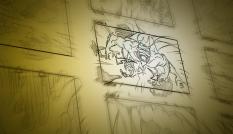
Storyboards and Pre-Visualization
Learn how to work with a storyboard artist, use pre-visualization software, know how detailed storyboards should be, creative restrictions to be aware of, how to create storyboards even if you can't draw, and when to use animatics.
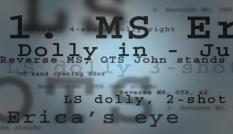
Creating a Shotlist
Learn how to create a shot list, location requirements, how to decide your shots, the elements in a shotlist, how the shot lists are used to schedule and budget a film, and to prepare for days when you go over schedule or over budget.

The Visual Story
Learn how to use visual elements of shape, space, line, color, rhythm, movement and tone to frame the story.

Composing the Shot
Learn story-driven composition, techniques to create a compelling frame, and how working Hollywood directors approach cinematic composition.

Creating Depth on Screen
Learn techniques for crafting foreground, midground, and background elements, how to manage depth or flatness as a narrative tool, techniques used in network television shows to cheat depth, and the ways the camera lens can affect depth.
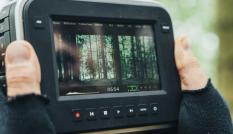
Shot Types and Camera Movements
Learn the intricacies of framing, the basic shot types, advanced variations on these shot types, how to quickly communicate your vision to the cinematographer, and the emotional responsive invoked by various shot types.
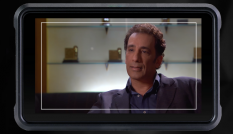
Head Room and Lead Room
Learn compositional techniques of headroom and lead room, technical considerations, the emotional impact of framing on the shot, short siding, and establishing continuity in reverse shots.

Eyelines
Learn how to choose the best eye line, directing techniques for ideal camera placement, how to overcome challenges when working with visual effects, and how to fine tune actor's eyelines within mere inches to achieve the desired emotional impact.

Screen Direction and the Rule of 180
Learn the core fundamentals of screen direction, how to establish the line of action, the rule of 180, exceptions to the rule of 180, instances where the line of action doesn't apply, how to shoot multiple character with an ever-moving line of action.

The Technical Frame
Identify and work with different aspect ratios, manage conversions, safe framing requirements, and how various aspect ratios are adjusted for different exhibition and broadcast formats.
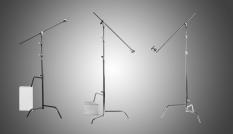
C-Stands
Learn how to use one of the most often-used stands on set - the C-stand.
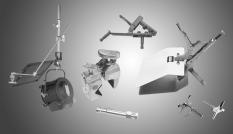
Clamps
Learn about the different types of clamps used to rig light fixtures and grip equipment on set.
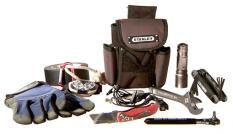
Grip's Tools
Learn the essential tools every grip needs when working on set.
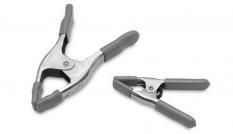
Rigging
Learn the most common rigging tools used by grips on set.
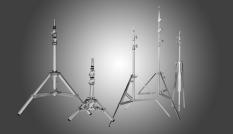
Stands
Learn the most commonly-used stands used on location to support lights and overheads.
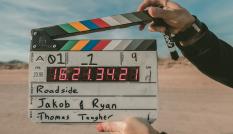
Using a Clapboard
Learn how to properly use one of the most iconic tools in the film industry.
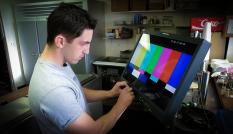
Using a Monitor
Production monitors are used on practically every set. In this module you will learn how to properly calibrate a production monitor to ensure that the image you see on screen is what is actually being recorded.
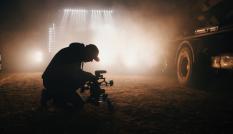
The Documentary Format
Learn about documentary storytelling, the types of documentaries, the challenges of the medium, observational cinema vs objective-driven stories.

Finding the Story
Learn how to find the story by refining the subject matter, develop a viable and engaging hypothesis, unlock the secrets of the story arc, find a balance between the art and commerce of documentary filmmaking, know the audience, and narrow down broad concepts.

Documentary Pre-Production
Learn how to effectively prep a documentary shoot, research your subject, properly use release forms and secure permissions to protect yourself legally, know what crew to hire, and how to determine when it’s time to shoot.
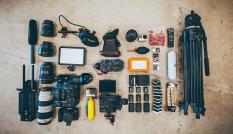
Choosing the Gear
Learn how to prepare for life in the field, how to choose the right camera and camera support gear, how to manage batteries and media on location, how to prepare for audio recording, how to pack for the road, and how to make sure your gear survives airports and the airlines.

The Interview Location
Learn what to look for in potential locations, how to work in the all-too-common hotel room or conference room, how to make sure a space is rights-cleared, and how to create a comfortable environment for your subject.
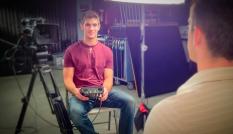
Interview Camera Set-Ups
Learn how to shoot interviews alone with one camera, one camera with an operator, a cross-shooting two-camera technique, how to work with different frame sizes, work with monitors, techniques for shooting on the run, and how and when to use auto settings.
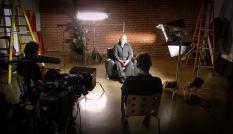
Preparing for the Interview
Learn how to find qualified subjects, techniques for preparing to shoot the perfect interview, tips on what to wear, how to select the right chair, how to work through a translator, and how to deal with release forms – especially in a heated or controversial interview.
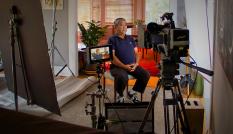
The Art of the Interview
Learn how to warm up a nervous subject, how to determine the objective of the interview, the first question you should always ask, how to uncover the truth especially with subjects intent on deceiving or leading you, how to work with difficult subjects, how to conduct interviews in which you are also on camera, and how to conduct man-on-the-street interviews.

Ethics and Objectivity
Learn the difference between a subjective and objective approach to filmmaking, how to recognize bias, how to balance your own ethics and feelings in difficult situations, and ethical guidelines both in the field and in the editing room.

Shooting B-Roll Footage
Learn to harness the power of B-Roll for your film, how to use verité footage, basic coverage techniques in the field, how to shoot sequences, how to tailor B-roll for interviews, and how to shoot B-roll after the edit.
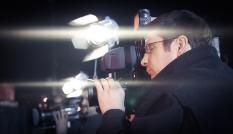
Field Shooting Techniques
Learn when to shoot in auto or manual modes, how to properly shoot your coverage, how to adjust the amount of footage for the project, how to shoot green screen plates, how to work with ambient sound, and how to manage the legalities of a shoot.
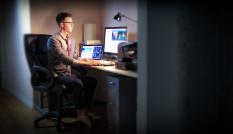
Editing Documentaries
Learn how to manage your footage, organize interviews and B-roll, how to find and narrow the story, how to maintain your objectivity in the thick of the process, know what to cut, and how to finish the film.
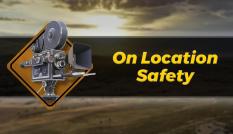
On Location Safety
Learn to identify and address safety concerns when shooting on location
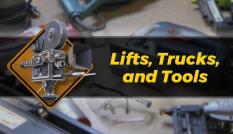
Lifts, Trucks and Tools
Learn industry standard safety guidelines for working around lifts, production trucks and when using power tools
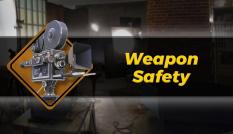
Weapon Safety
Learn industry standard practices for using weapons on set
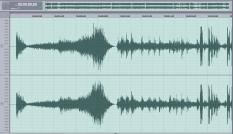
The Physics of Sound
Learn how the sound wave works, why we hear sound, how frequency and amplitude affect the sound and our approach to recording it.

How Microphones Work
Learn how microphones function, their classifications, output configurations and how to choose the best microphone for the job

Microphone Pick-Up Patterns
Learn the different types of pick-up patterns, how they capture sound, and which to choose when recording audio.

Audio Pre-Production
Learn how to prepare for a shoot by breaking down the script, determining the best equipment to use and how to address complex scenes.
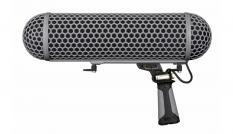
The Microphone Boom
Learn about the types and uses of boom poles, windscreens, shock mounts and techniques for monitoring audio

Recording the Audio
Learn the difference between analog and digital recording, how audio is encoded and recorded, setting levels, managing peaks, working with compressors and limiters, and how to record the perfect audio.

The Psychology of Editing
Learn when to cut, how to determine whether you should cut or not, the hierarchy of story-telling importance when editing, what to show or not show, and how to use psychology to craft a scene the invokes powerful emotions.

Data Management and Workflow
Learn how to develop a system for organizing the footage from set to post, how to develop a workflow that keeps the process smooth and conflict-free, how to conduct post-production meetings, the role of the post-production supervisor, standard techniques for labeling and managing footage, and data handling techniques.
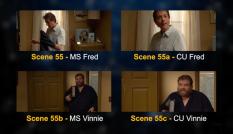
The Assembly Cut
Learn how to approach the assembly cut, how to manage music and sound effects, what should or shouldn’t be included, and how to address issues of pacing, story, and character development.
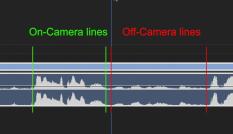
How to Shoot and Edit a Dialogue Scene
Learn to shoot dialogue on set, advanced techniques for manipulating the pacing and emotional intensity of the scene, how to work with changing background ambience, and techniques to improve actors' performance.
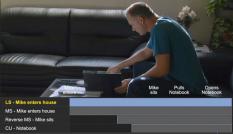
How to Shoot and Edit Action
Learn how to edit action for proper flow, continuity, and pacing, techniques for compressing time, revealing only the essentials to keep the story moving forward and advanced editing techniques.
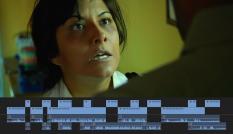
The Rough Cut
Learn how to approach the rough cut, determine what moments work, how to re-structure the story, and ultimately create a movie that stands on its own- divorced from the script.

Test Screenings and Feedback
Learn how to prepare for and conduct a test screening, how to choose the right test audience, what questions to ask after the test screening, and how to filter the responses into usable comments that can improve the story.
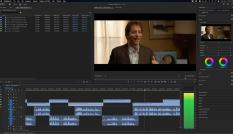
The Fine Cut
Learn techniques for perfecting every single frame of your movie before locking the picture edit, how you will know when the movie is done, the implications of locking the picture, and the process of prepping the film for audio.

Intro to Audio Post-Production
Learn the five components of audio and go to the sound studio to experience the construction of the audio for a scene. Learn the ADR process, the contributions of Foley to the mix, the role of sounds effects and ambience, and the music.
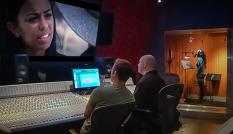
ADR
Learn the technical process of re-recording the dialogue of a scene during the ADR process.

Directing Actors in ADR
Learn how to work with actors to get the best vocal performance possible during the ADR process, address acting problems and actor fatigue, and gain valuable tips on how to direct a natural and realistic performance so the ADR performance becomes better than the original delivery on set.
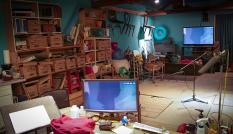
Foley
Learn how Foley is recorded and mixed to create and full, rich audio track. Learn the types of Foley, how much should be recorded, the process of recording Foley, and how to properly schedule and budget this creatively demanding aspect of audio post-production.

Sound Effects
Learn the process of creating a compelling sound effects track for your movie, where to find high quality sound effects, how sounds effects and Foley work together, how to find a balance with the dialogue and music, and the role of the sound effects editor.
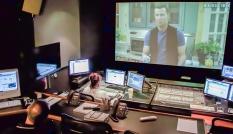
Mixing the Audio
Learn how all the final components of the audio are mixed together.

Emotion Through Music
Learn to use music as a dramatic player in a way that properly supports the emotion of the scene without overwhelming the performance.

The Who and How of Music
Learn the people involved in crafting the score to a movie, the types of scores available, and how music is recorded - from synth to live instruments.

Working with the Composer
Learn how to work with a composer through scoring process, from the initial meeting to making changes to the completed score.

Music Licensing
Learn how music is licensed, and how existing music can be used in your production
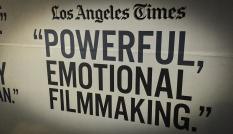
Film Marketing
Learn how the massive marketing machine works in hollywood and how you can use it to promote your movie.

Designing the Key Art
Learn how to design an effective movie poster that will reel your fans in, help you raise awareness in your film, and get a distribution deal.

Building Your Website
Learn how to build an engaging website that will help you sell your film to audiences and distributors.
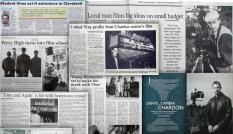
Building a Press Kit
Learn how to craft the idea press release to get the media interested in covering your story.

Working with the Media
Learn how to conduct yourself during television, print, and radio/podcast interviews to get the maximum exposure for your project.

Intro to Distribution
Learn how the distribution process works, the way studios approach the process, the windows and time frames of distribution, how to approach self-distribution, and knowing your audience.
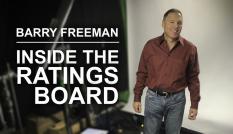
Film Ratings and the MPAA
Learn how a rating can impact your ability to sell and monetize your movie, how to work with the MPAA, and the process of obtaining a rating.

Domestic Distribution
Learn the distribution process so you know what to expect, what materials are needed, and most importantly how to protect yourself in the high stakes game of film distribution.

Foreign Distribution
Learn how foreign sales agents work, how to find a reputable agent, common scams used to steal your movie without paying you, what you will be expected to deliver, how to collect your money, and hundreds of other tips. We take you to the heart of it all at the American Film Market to see – firsthand, how the foreign distribution process works.

Film Festivals
Learn how to find a qualified producer’s rep, how to get into top film festivals, what to do once you are accepted, how to attract the right audiences at the screenings, and how to leverage the opportunity for your next production.

Internet Distribution
Learn how to properly distribute your movie online, how content aggregators work, how to find a unique presence online, and how to leverage your online movie to get your next movie deal.

Framing People
Learn techniques for framing people from lead room to headroom, how networks and major studios influence framing choices of their programs, how to use single and dirty shots to convey connection or distance between characters, and how directors and cinematographers decide on common guidelines for each production.

Money Management
Learn to manage the budget, set-up a bank account, manage the flow of money throughout the production including payroll, loan outs, kit fees, per diems, mileage, and petty cash.

How to Shoot a Spec Commercial
Emmy-winning director, Jason Tomaric takes you through how he shot a $2,500 spec commercial for his demo reel to generate more clients.

